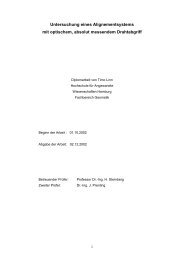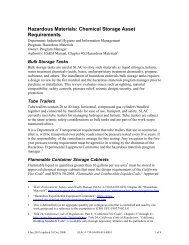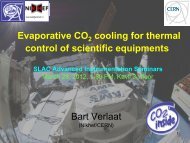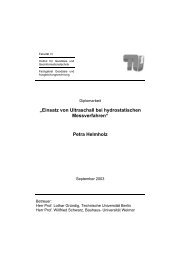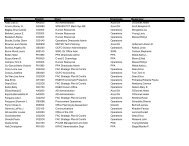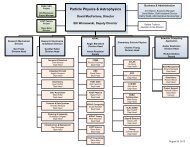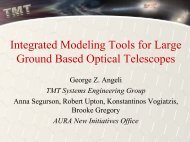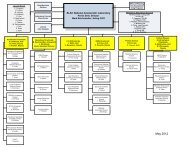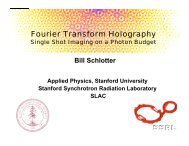BES - SLAC Group/Department Public Websites - Stanford University
BES - SLAC Group/Department Public Websites - Stanford University
BES - SLAC Group/Department Public Websites - Stanford University
You also want an ePaper? Increase the reach of your titles
YUMPU automatically turns print PDFs into web optimized ePapers that Google loves.
FYO7 <strong>SLAC</strong> S CIENCE AND T ECHNOLOGY S ELF E VALUATION<br />
installed at a later date with potentially even higher capabilities once superconducting undulator<br />
technology is realized.<br />
Macromolecular Crystallography<br />
The macromolecular crystallography program has developed an integrated automation system that<br />
allows for fully remote instrument control and data taking. The Blue Ice user software interface has<br />
been adopted as a standard by many of the synchrotron radiation laboratories in the world.<br />
O PPORTUNITIES FOR I MPROVEMENT<br />
Advances in X-ray Diffraction Capabilities<br />
The x-ray diffraction capabilities at SSRL could be greatly advanced by the use of large area<br />
detectors in conjunction with the diffractometers. A plan has been developed and, with adequate<br />
funding, can be started in 2008.<br />
Inelastic Scattering and Advanced Spectroscopy Facility for SPEAR3<br />
Currently this experimental apparatus requires installation and removal from the beam line for each<br />
experimental run. SSRL recognizes that performance and efficiency gains can be achieved by<br />
locating this semi-permanently in a hutch until a new undulator beam line can be built.<br />
Small and Wide Angle Scattering Studies of Soft Matter and Colloids<br />
Small angle scattering research at SSRL could be significantly improved with a tunable source that<br />
fully utilizes the high brightness capabilities of SPEAR3. Recognizing this fact and obtaining<br />
validation through a user workshop and a focused review, SSRL has submitted a proposal to DOE to<br />
build a new beam line for small angle scattering.<br />
Advanced Area Detectors for X-ray Protein Crystallography Diffraction Studies<br />
Just becoming available is a new generation of pixel array detectors (PAD arrays). PADs offer<br />
distinct advantages in both signal-to-noise and readout speed. Retrofitting of existing experimental<br />
stations with such detectors would offer significant performance gains. Proposals are being<br />
developed to acquire this new technology for SSRL.<br />
Objective 1.2 Leadership in Science and Technology<br />
Photon Science faculty (one of the two facilities at <strong>SLAC</strong>) and SSRL staff are leaders in the<br />
international community as seen in the list of advisory and review committees on which they serve.<br />
Bergmann, Uwe<br />
Proposal Review Panel member at National Synchrotron Light Source (NSLS)<br />
System Concept Review of the LCLS X-ray Transport, Optics and Diagnostics (XTOD),<br />
2006<br />
Brennan, Sean<br />
Member, NSLS-II Conceptual Design Review Panel, Sept. 2007<br />
Chair, APS proposal review panel on Applied Materials Scattering<br />
Corbett, Jeff<br />
Australian Synchrotron International Machine Advisory Committee<br />
DeBeer, Serena<br />
APS spectroscopy proposal review panel<br />
Hedman, Britt<br />
Member, BioCAT Advisory Committee, Advanced Photon Source, Argonne National<br />
Laboratory (ANL)<br />
Member, Scientific Advisory Committee, Canadian Light Source, Canada<br />
Member, Committee for the Scientific Evaluation of the MAX IV Light Source Proposal,<br />
F I N A L P A G E 9



